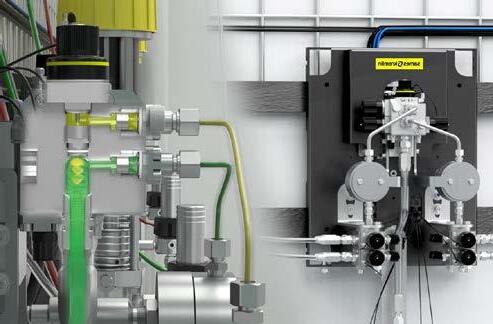
11 minute read
Cyclomix® Evo, the brand new solution for

2&3 components mixing and dosing
•
With the Cyclomix® Evo solution, you are guaranteed to get the best out of your production tool with:
PERFECT DOSING AND MIXING with an accuracy of +/- 1%, thanks to a patented injection system for all types of products (for waterborne, solvent-based, acid, epoxy, polyurethane paints, etc.).
HIGH PRODUCTIVITY by the management of 2 independent circuits: rinsing and priming is possible during production. An intuitive interface that requires only 2 minutes of training which can evolve according to your needs by adding new features throughout the life of your Cyclomix® Evo.
THE BEST CHOICE OF PRODUCTIVITY AND PEACE OF MIND!
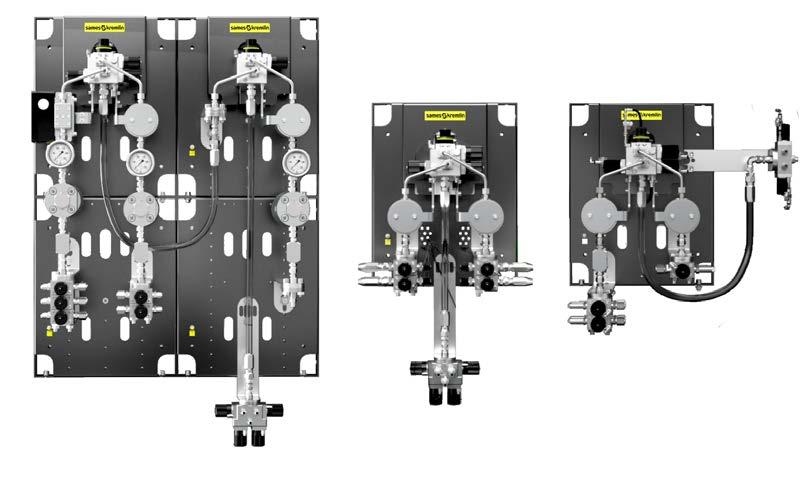
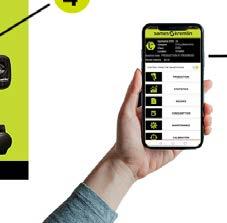
OPTIMISED MANAGEMENT OF WASTE of mixed paint and used solvents thanks to the «paint optimisation» function with optional collection of mixed paint, dirty solvents. Reusable solvents can be used a second time to dispose of the mixed paint.
Alessia Venturi Editor-in-chief

For some years now, the energy sector has been experiencing a green acceleration: the use of fossil fuels is still widespread, but the diversification of the energy mix is gradually improving, as the world, especially Europe, is working to increase the share of renewable energy available for consumption. Irrespective of their location, all oil and gas companies are looking for ways to reduce emissions in their processes – the European one by proactively seeking to replace fossil fuels, the US ones by focusing primarily on removing carbon emissions from existing operations1 (e.g. through “carbon sequestration”). Investment in the oil sector is still going to be very high for the next three to five years, driven by the reopening of China after the pandemic. However, the global energy crisis of the last two years has undoubtedly triggered unprecedented momentum in favour of renewables, and the International Energy Agency predicts that in the next five years the world is going to produce as much renewable energy as it has in the last two decades. By 2025, renewable energy is going to overtake coal as the main source of electricity generation worldwide2. This phase of energy transition towards environmentally friendly solutions poses major challenges in terms of new infrastructures or adaptation of existing ones to new energy sources and production methods. Thanks to continuous innovation, renewable energy production plants are becoming increasingly efficient and competitive. For example, wind turbines today reach diameters of 200 metres, and their size is expected to grow further3 Newly constructed pipelines are designed to
1 https://www.advisoronline.it/asset-manager/gestori-e-mercatifinanziari/69620-settore-energetico-5-trend-per-il-2023.action
2 https://www.inabottle.it/it/tendenze/energie-rinnovabili-trend-2023
3 https://www.enelgreenpower.com/learning-hub/energy-transition/ renewable-energy-sources be able to also transport green hydrogen (an energy carrier – not a source – that can only be obtained from renewable sources) in future, so that will be still able to be used once the energy transition is complete. A decisive role is also played by energy storage systems, which are needed to make up for the intermittency of renewable sources such as sun and wind4 All the dynamism that can be detected in the trends of the next five years for the energy sector and in their related energy transition processes has also a huge impact on the sector of corrosion prevention and protection technologies, helping to lengthen the service life of assets but above all to design new infrastructure that is more efficient, durable, and easy to maintain. This Corrosion Protection issue offers a wide-ranging and detailed insight into scientific studies and research, innovative products and success stories of corrosion protection solutions for wind turbines, gas pipelines, solar parks, hydroelectric power plants, and offshore installations: from traditional epoxy systems to innovative glass flake coatings, up to new coatings containing functionalised graphene oxides and self-healing corrosion protection systems. Not to mention the analysis of the parameters for optimum surface preparation and correct design of cathodic protection systems for submerged structures and the case studies on successful maintenance interventions.
A very rich issue, testifying to the importance of investment in renewable energies as an exceptional driving force for research in the corrosion protection industry as well as a great opportunity for economic growth for all industry players.
4 https://www.inabottle.it/it/tendenze/energie-rinnovabili-trend-2023
Carboline announces the release of Hydroplate, a product line exclusively for the water and wastewater markets
Hydroplate high-performance, potable water linings are the ultra-durable solution for protecting the most valuable assets against the damaging effects of corrosion in the new tank construction and maintenance, repair, and operation (MRO) markets. These linings are designed to coat varying types of steel and concrete ground and elevated storage tanks and to provide the ultimate protection for potable water pipes, valves, and fittings. The Hydroplate series includes single and multiple coat linings that offer high solids and near solventfree options, with high-build capabilities, fast cure properties, and the ability for rapid return to service. "The Hydroplate line will continue to build on Carboline's 75-year mission to deliver innovative solutions for protecting and preserving our vital steel and concrete infrastructure assets,” said Jeremy Sukola, the Water and Wastewater Market Manager for Carboline. "They offer varying film builds, real-world application benefits, and other service life-extending attributes."
Hydroplate linings provide superior protection while adhering to the most stringent requirements outlined in multiple AWWA standards and NSF/ANSI/CAN 61- NSF/ANSI/CAN 600 standard that significantly reduces the allowable amounts of certain extractable solvents. Hydroplate potable water linings provide lower overall VOCs than many previous-generation linings while offering an extremely durable and sustainable option for extending asset service life.
"Hydroplate linings provide the robust chemical resistance required in the water and wastewater markets," remarks Paul Atzemis, Carboline's Director of Technical Service. "These products are outstanding options for water storage and the harsh environments found in water treatment plants."
The Hydroplate line of materials offers a variety of film thickness options, from thin film applications under five mils DFT to higher build solutions that exceed 30 mils in a single application. With varying advanced resin technologies, Hydroplate lining options include the ability to cure down to 20 °F (-6 °C), fast recoat and overcoating schedules, and extended maximum recoat windows. These application benefits can help extend the painting season and limit costly project schedule delays.
www.carboline.com
Hexigone’s smart inhibitors reach Mexico via first quality chemicals
Hexigone Inhibitors, a manufacturer of award-winning, patented anticorrosives, announced its exclusive partnership with First Quality Chemicals, leader in distribution of the most innovative and superior specialty chemicals in Mexico. The partnership will bring Hexigone's high-quality products to new customers in Mexico, further expanding the company's reach in the Americas. First Quality Chemicals has over 20 years’ experience distributing specialty chemicals in Mexico and has over 1,000 customers. They are known for their ability to understand customer needs and strive to be “unique, disruptive and different” - aligning with Hexigone’s product and company ethos. "It’s great to expand our sales team via First Quality Chemicals," said Dr Patrick Dodds, CEO of Hexigone. "We’ve already developed great relationships, and I have no doubt that our collaboration will be a successful one. The Mexican coatings market is still in transition from the most commonly used corrosion inhibitors - that have been banned in some other countries - to new technologies. Intelli-ion® will allow regional coatings customers to offer their customers a completely new way of protecting against corrosion as well as reformulating to optimize for performance, sustainability or cost."
Jaqueline Chinas, Awesome Dreams & Innovation Leader at First Quality Chemicals, added: “We are fully committed to providing our customers with the latest technologies and the most innovative solutions to help them achieve their goals and manufacture products that can make the world a better place. We are sure that Intelli-ion® it´s the perfect match for the coatings manufacturers´ formulations.” Hexigone offers a solution to metal asset protection with their high-performance anti-corrosive additives for coatings, providing a safe and cost-effective alternative to traditional heavy metals, phosphates, and toxic chromates. Corrosion inhibitorIntelli-ion®AX1 – protects in a ‘smart’ way and is completely unique to the market. Intelligent micro-reservoirs enable the coatings to react faster to the environment, triggering the release of the inhibitor ‘on demand.’ This innovative technology has caught the attention of coatings industry organisations globally, earning Hexigone ‘Sustainable Innovation of The Year’ from British Coatings Federation in 2022, and ‘Corrosion Innovation of the Year’ from AMPP’s Materials Performance in 2021. The company’s specialty chemical network is growing fast – Hexigone are currently working with 13 distributors across the globe.
www.hexigone.com
Huntsman presented new coatings products at ECS

The Belgian company Huntsman launched three new products at the European Coatings Show (ECS), the international trade fair dedicated to paints and coatings that took place from 28th to 30th March 2023 in Nuremberg (Germany).
The new products included POLYRESYST® IC6005 polyurethane system, JEFFAMINE® M-3085 amine and POLYRESYST® IC6005 system. Moreover, the visitors had the opportunity to discover more about the extensive range of polyetheramines of the company, such as the mono-functional JEFFAMINE® M 2070 –which can be used as a reactive dispersant.
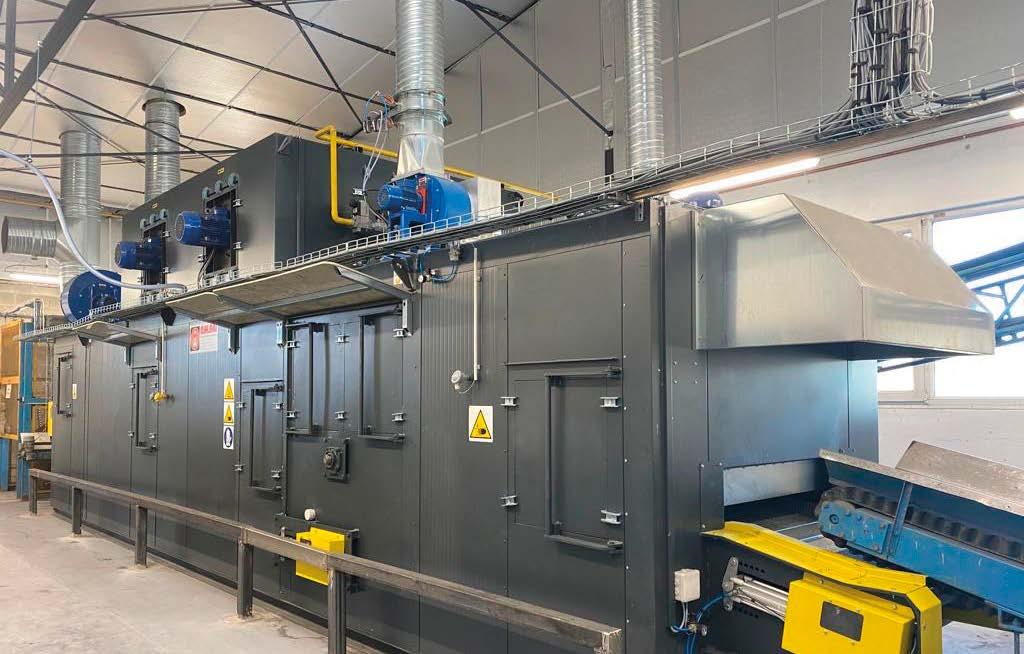
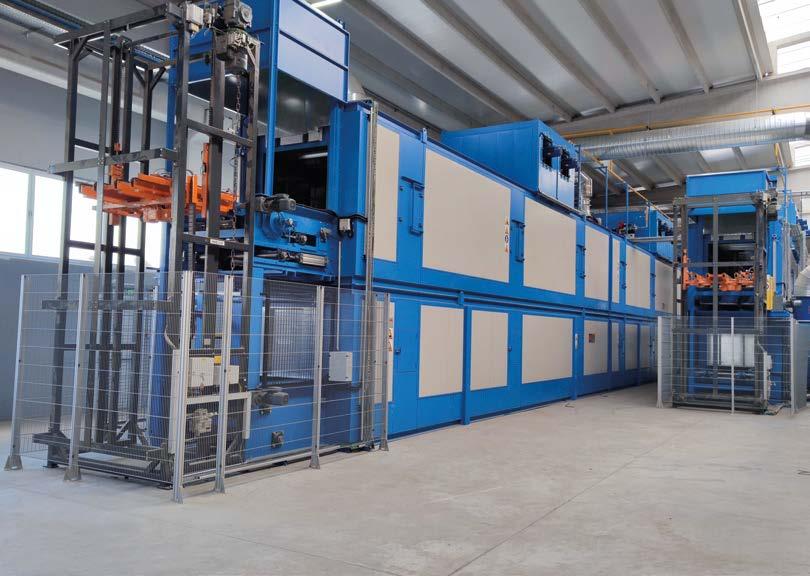
POLYRESYST® IC6005 is an intumescent coating specifically developed for the construction industry, in order to provide passive fire protection performances alongside corrosion protection properties. Suitable for use on a variety of substrates, the polyurethane system can offer improved chemical and water resistance, as well as durability. Besides containing no added solvents and low VOC levels, it also cures quickly at any desired thickness.
Huntsman also presented the new JEFFAMINE® M-3085 mono-polyether amine with a higher molecular weight than the commonly employed solutions, so it can be used as a raw material for the synthesis of pigment dispersants or as a building block in reactive surfactants for the emulsification or dispersion processes of epoxy resins in water. Finally, the company showcased its new POLYRESYST® IC6005 system on an I-beam, a cross laminated timber panel and a series of tiles. In addition, the visitors of the trade fair ECS were able to experience two keynote speeches from the coating experts of Huntsman: www.huntsman.com
‘The use of mono-functional polyetheramines in waterborne epoxy resins’ by the application specialist Steven Buvens on Tuesday 28th March 2023.
‘Novel Fast Curing Intumescent Polyurethane Coating System’ by the technical manager Stefan Priemen on Wednesday 29th March 2023.
PPG presented Steelguard 951 fire protection coating for the architectural market
The international coatings manufacturer PPG has recently announced that it will launch PPG Steelguard® 951, an innovative epoxy intumescent coating that has been specifically developed to meet the demands of modern architectural steel, providing up to three hours of cellulosic fire protection.
In the case of a fire, the 100% solids coating expands from a thin and lightweight film into a thick foam-like layer that insulates the steel and maintains its structural integrity, providing more time for people to escape and limiting damage to buildings and assets. PPG Steelguard 951 coating also provides effective corrosion protection even in severe atmospheric environments, up to ISO 12944 C5, without the need for a top coat.
In addition, it reaches up to 3,500 microns dry film thickness in a single coat and cures rapidly, making it ready to handle the day after application.
“Structural steel plays a critical role in modern architecture by enabling buildings to meet specific fire protection and corrosion resistance according to their function. PPG Steelguard 951 coating is unique in combining an aesthetically-pleasing finish with high corrosion protection and, most importantly, the ability to maintain the steel’s stability in the event of a fire,” has stated Richard Mann, the global passive fire protection product manager for the Protective and Marine Coatings division of PPG. www.ppgpmc.com
PPG has designed the new intumescent coating using its patented flexible epoxy technology, which offers durability and edge retention properties that reduce the risk of cracks caused during handling and transportation. It is tested in accordance with all recognised national and international fire and corrosion standards, including EN 13381-8, BS 476, ISO 12944, GB 51249 and GB14907 (for specified environments).
A new topcoat - and even more innovation
Fastener Fair Global 2023, the big meet-up for the fastener technology industry, is over. A wide range of manufacturers, distributors and suppliers came together to showcase their technologies and innovations on more than 23,000 square metres, including DÖRKEN, a supplier of high-performance corrosion protection, who presented a new product innovation. The new topcoat from DÖRKEN, DELTA-PROTEKT® TC 502 GZ stands out thanks to the fact that it has a very narrow friction coefficient window, it is PTFE-free and it ensures strong process stability. This silver, water-based topcoat is therefore ideal for components with metric threads, such as screws and nuts, and meet the demands made by customers for a topcoat of this kind. In combination with a basecoat, DÖRKEN’s latest solution offers effective corrosion protection with additional multifunctional properties, and also provides cathodic corrosion protection. Here, the less noble zinc contained in the coating sacrifices itself in favour of the more noble steel, thereby ensuring that the component remains protected, even if the coating is damaged, as the zinc dissolves more rapidly. Whilst the basecoat is primarily responsible for protection against corrosion, other properties that are important for a wide variety of components can be added via the topcoat. The very narrow friction coefficient window and high process stability ensure that processes always proceed in the same way to guarantee consistently high-quality results. This makes processes easier to plan, more efficient and less susceptible to unforeseen events. DÖRKEN also bears sustainability very much in mind with the new topcoat. By avoiding polytetrafluoroethylene (PTFE), the company is specifically thinking about the future of the coating industry as well as the environment. www.doerken.com
But innovation is more than just developing new product solutions. When it comes to coating technology, DÖRKEN also works closely with its partners, for example, the companies EJOT and WMV. EJOT, a specialist in fastening technology, was looking for a standard for coating screws with internal drives. In the case of the micro screws, which are used in a large range of industries, coating accumulations occurred in the drives from time to time, and this had a negative effect on the bit accessibility of the screws. As a result, safe assembly was not necessarily ensured.
The collaborative efforts of the companies EJOT, DÖRKEN and WMV, a plant manufacturer specializing in surface treatment, took many years. But the time invested paid off in the end: a new type of coating system, in which the parts are ideally coated, was created. The system, called PULZ®, operates with a permanent circulation of the components, which are thus coated evenly and with thin layers. It is the first system in the world that can coat 120 kilograms of material at 32 g acceleration with a change in position. In addition, optimization has made it possible to establish a process in which CO2 emissions are reduced by 30 per cent compared to before. Be it new coating solutions or new innovations in plant engineering - wherever there are innovations in the field of coatings, DÖRKEN is not too far away. Always close to the customer, always with sustainability in mind.
Hempel joins IMO public-private partnership to help prevent biofouling on ships’ hulls
World-leading coatings company, Hempel A/S, has increased its commitment to supporting the maritime industry’s shift to ever more sustainable operations by joining the Global Industry Alliance (GIA) for Marine Biosafety. The GIA, created under the International Maritime Organization’s (IMO’s) GloFouling Partnerships project, is a crosssectoral platform for collaboration. Following Hempel’s membership, the GIA comprises 13 private companies that work with governments, the IMO and other non-governmental organisations to increase awareness of the environmental implications and risks associated with biofouling on ships hulls, identify common issues, and foster solutions for mitigation. The alliance also informs policy developments and shares technical expertise within NGOs. “At Hempel, we are very pleased to be joining the GIA for Marine Biosafety. We believe that strong collaboration between all stakeholders - governments, NGOs and the maritime industry - is needed to identify challenges and accelerate solutions to decarbonise the maritime industry and protect marine environments. As a provider of hull performance solutions that can help prevent the build-up of invasive species on hulls as well as reduce the fuel usage and carbon emissions of ships, we look forward to taking part in this collaboration,” says Alexander Enström, Executive
Vice President and Head of Marine.










